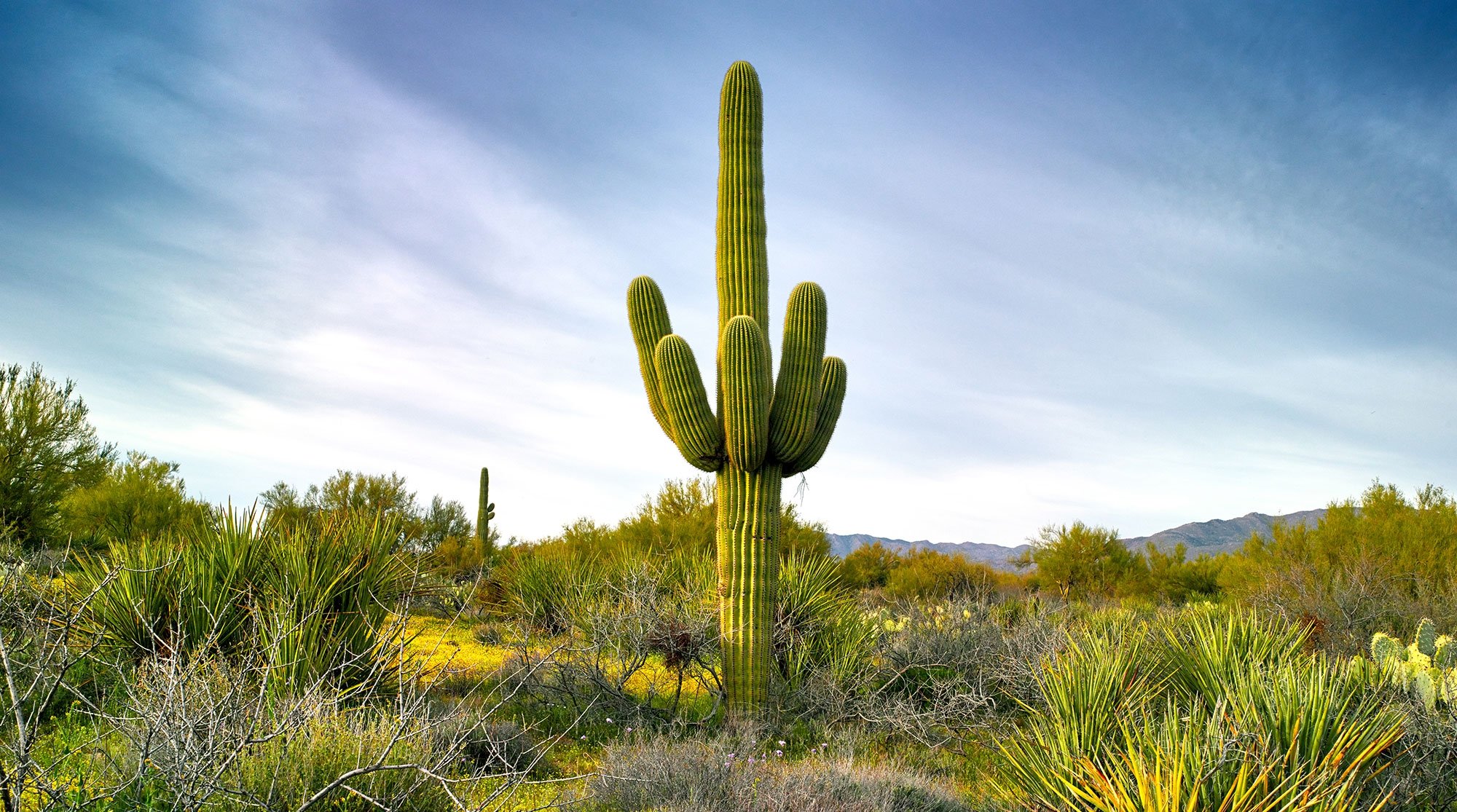Arizona, the Grand Canyon State, is synonymous with arid deserts, majestic landscapes, and an impressive variety of flora, predominantly featuring cacti. These hardy succulents have evolved myriad adaptations to thrive in such a harsh environment, manifesting in a breathtaking array of forms, sizes, and colors. They not only symbolize the desert but also contribute profoundly to the biodiversity of the region. This guide delves into the most iconic cactus species found in Arizona, illuminating their distinguishing characteristics and aesthetic allure.
Majestic Saguaro: The Icon of the American Southwest
Perhaps the most famous cactus species associated with Arizona is the Saguaro (Carnegiea gigantea). This colossal giant can tower up to 40 feet tall and live for over 150 years, creating an awe-inspiring silhouette against the azure desert sky. The Saguaro boasts an unmistakable botanical feature: its elegant arms that begin to ascend from the main trunk as it matures, often appearing as though they are stretching towards the heavens. These arms can number over twenty on a single plant, and they bloom with delicate white flowers during the peak of the spring season, attracting pollinators like bees and hummingbirds.
Beyond its physical grandeur, the Saguaro serves as a vital habitat for numerous desert species. Woodpeckers, owls, and bats often make their homes in the hollows of a Saguaro, while its ripe, red fruit provides sustenance for wildlife and, historically, the indigenous peoples of the region. The Saguaro stands not only as a symbol but as an essential component of the desert ecosystem.
Charming Prickly Pear: The Versatile Delight
Another iconic cactus species, the Prickly Pear (Opuntia spp.), captivates onlookers with its vibrant, flat pads and stunning blossoms. This cactus is often found in colorful clusters throughout Arizona and ranges in color from deep green to silvery-gray. The pad segments, or “nopales,” are adorned with sharp spines—yet this is part of their charm. In spring and summer, they display vibrant yellows, pinks, and reds, transforming the landscape into a pleasing palette of colors.
The versatility of the Prickly Pear extends beyond its aesthetics. This species is celebrated not only for its visual impact but also for its edibility. Young pads can be harvested and consumed as vegetables, while the fruit (often referred to as “tunas”) can be transformed into jellies, syrups, and beverages. Cooks and amateur foragers alike appreciate the distinctive flavor profile of the Prickly Pear, cementing its place in both culinary traditions and ecological significance.
Enchanting Organ Pipe Cactus: The Desert’s Fragrance
While the Saguaro typically captures the imagination, the Organ Pipe Cactus (Stenocereus thurberi) possesses an undeniable allure all its own. Named for the way its tall, pillar-like arms rise in parallel from the ground, resembling the pipes of a musical organ, this enchanting cactus can reach impressive heights of up to 20 feet. The nighttime bloom of its fragrant white flowers invites pollinators such as moths and bats, enhancing the ethereal atmosphere of Arizona’s nights. The perfume of the flowers offers a nocturnal symphony, captivating both human and animal senses alike.
Growing predominantly in the Sonoran Desert, the Organ Pipe Cactus thrives in the harshest conditions, showcasing an intricate relationship between flora and landscape. Its unique growth patterns create striking visual formations, frequently used in landscape design, making this species not just an ecological marvel but a visual centerpiece within the natural desert gallery.
Whimsical Barrel Cactus: Nature’s Reservoir
The Barrel Cactus (Ferocactus spp.) is another staple of the Arizona landscape, easily recognized for its distinctive barrel shape and prominent ribs. These cacti can exhibit vibrant yellow or red flowers at their crown, adding a splash of color to their otherwise rugged exterior. The Barrel Cactus is sometimes referred to as the “boojum tree” of the desert; capable of storing approximately a gallon of water, they symbolize survival against the elements.
Notably, the unique ribbed structure of the Barrel Cactus allows it to expand and contract with the seasons—a boon for its water retention capabilities. This remarkable adaptation not only enhances its resilience but also contributes to the aesthetic appeal, as sunlight dapples across its surface, creating a mesmerizing interplay of light and shadow.
Euphoric Cholla: The Teddy Bear Deception
Perhaps the most misunderstood of Arizona’s cacti is the Cholla (Cylindropuntia spp.), often admired for its fuzzy, teddy bear-like appearance. However, approaching too closely reveals a serrated assault of spines reputed for their ability to latch onto unsuspecting passersby. The Cholla, too, is a feast for the eyes, with vibrant blossoms emerging from even the most seemingly uninviting surfaces. The Cholla is emblematic of the desert’s dual nature—inviting yet treacherous, and this juxtaposition is an essential aspect of its charm.
Much like its cousins, the Cholla excels in arid conditions thanks to its ability to store water and even propagate through its segmented joints, which can root themselves upon contact with soil. This resilience stands as a testament to the tenacity of life in the desert, an enduring theme among the stunning cacti of Arizona.
Conclusion: The Elegant Resilience of Cacti in Arizona
In exploring the iconic cactus species of Arizona, one uncovers more than a mere collection of plant varieties; rather, these cacti represent the epitome of life in the harsh desert environment, showcasing resilience, adaptability, and an undeniable aesthetic appeal. From the gentle sway of the Saguaro to the vibrant blooms of the Prickly Pear, the desert is an ever-changing landscape infused with unique complexities. Each species narrates an untold story of survival and beauty, inviting enthusiasts, locals, and travelers alike to immerse themselves in the enchanting world of Arizonan cacti.





Leave a Comment